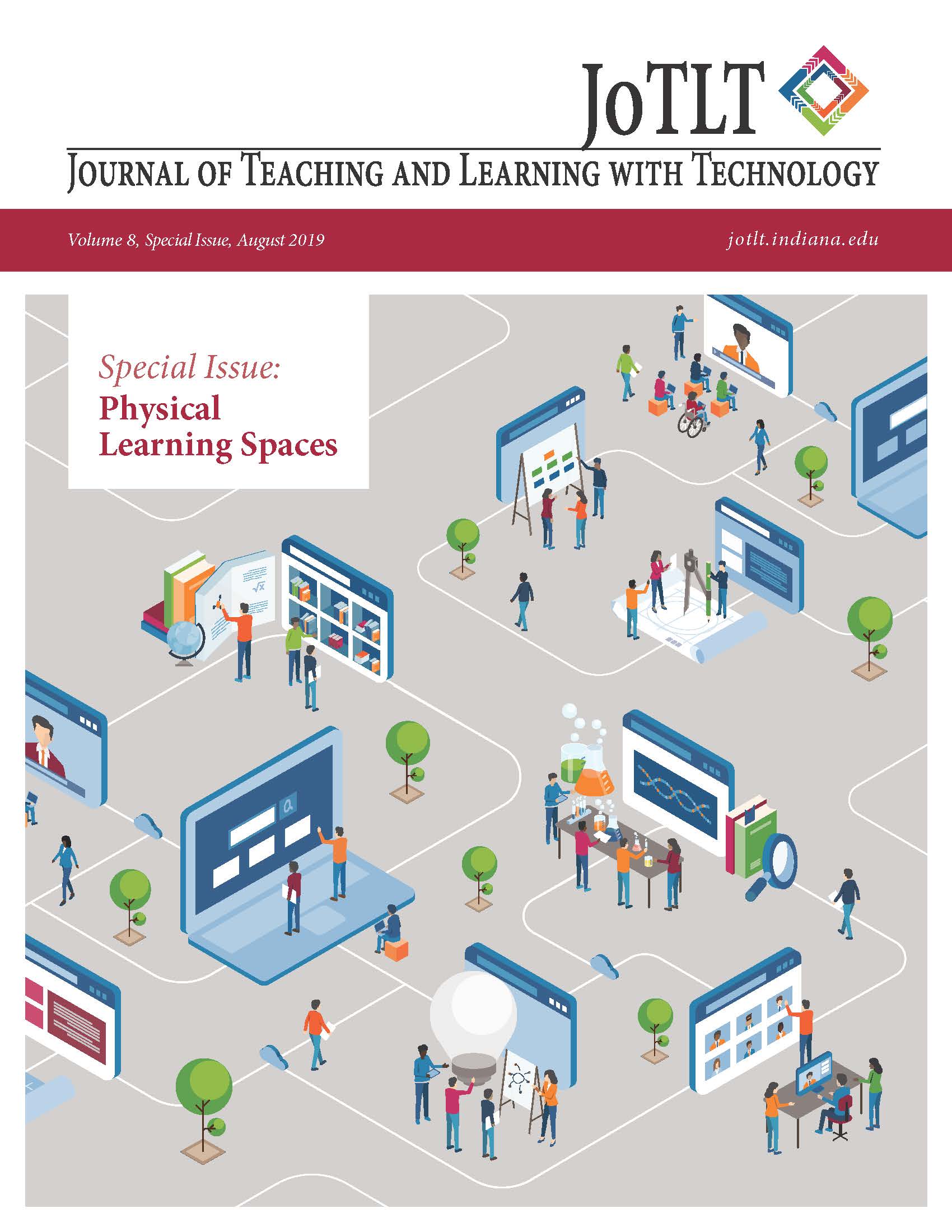Ready for Equity? A Cross-Cultural Organizational Framework to Scale Access to Learning-Ready Classrooms That Support Student Success
Main Article Content
Abstract
Abstract: There is a national urgency in higher-education to close the achievement gap and increase graduation rates for first generation, low-income and underrepresented minorities, and classroom environments are integral to student learning experience. The authors propose shifting learning space discussions away from building an historically small number of active learning spaces, towards a larger number of what they term “learning-ready classrooms,” which apply universal design principles to support the multiple teaching identities and philosophies of faculty and the physiological, cultural, and cognitive needs of all students. Equitable access to learning-ready classrooms means they must be built at scale, so it is imperative to earn campus-wide commitment to this goal by honoring the multiple perspectives and priorities of members of all six cultures of the academy, as identified by Berquist (1992) and Berquist and Pawlak (2008). This article proposes a cross-cultural organizational framework, embodied in the example of a Classroom Readiness Committee (CRC) charter, that unites and aligns the different organizational perspectives of its members through clearly articulated mission, vision, functions and belief statements. Preliminary findings suggest that institutions can engage and mobilize multiple stakeholders towards the common goal of providing equitable access to learning-ready classrooms as long as the goal aligns with the core values and priorities of the institution, is clearly articulated and communicated, and honors the perspectives of the six cultures of the academy.
Downloads
Article Details
- Authors retain copyright and grant the Journal of Teaching and Learning with Technology (JoTLT) right of first publication with the work simultaneously licensed under a Creative Commons Attribution License, (CC-BY) 4.0 International, allowing others to share the work with proper acknowledgement and citation of the work's authorship and initial publication in JoTLT.
- Authors are able to enter separate, additional contractual agreements for the non-exclusive distribution of the journal's published version of the work (e.g., post it to an institutional repository or publish it in a book), with an acknowledgement of its initial publication in JoTLT.
- In pursuit of manuscripts of the highest quality, multiple opportunities for mentoring, and greater reach and citation of JoTLT publications, JoTLT encourages authors to share their drafts to seek feedback from relevant communities unless the manuscript is already under review or in the publication queue after being accepted. In other words, to be eligible for publication in JoTLT, manuscripts should not be shared publicly (e.g., online), while under review (after being initially submitted, or after being revised and resubmitted for reconsideration), or upon notice of acceptance and before publication. Once published, authors are strongly encouraged to share the published version widely, with an acknowledgement of its initial publication in JoTLT.
References
Beers, M. & Summers, T. (2018, May-June). Educational equity and the classroom: Designing learning-ready Spaces for all students. EDUCAUSE Review, 53(3), 54-55.
Bergquist, W.H. (1992). The four cultures of the academy: Insights and strategies for improving leadership in collegiate organizations. San Francisco, CA: Jossey Bass.
Bergquist, W. H., & Pawlak, K. (2008). Engaging the six cultures of the academy. San Francisco, CA: Jossey Bass.
California State University. (2018). Redefining historically underserved students in the CSU: Moving beyond race and economic status to close equity gaps. Retrieved from http://www.dashboard.csuprojects.org/rethinkingthegap/Historically-Underserved-StudentFactor-Model.pdf
Couper, L. (2019). Student success in the classroom: Environmental factors that affect well-being (Unpublished master’s thesis). San Francisco State University, San Francisco, CA.
Gutek, G. L. (2014). Philosophical, ideological, and theoretical perspectives on education (2nd ed.) Boston, MA: Pearson.
Holy, T. (1961). California's master plan for higher education, 1960-1975: A factual presentation of an important development. The Journal of Higher Education, 32(1), 9-16.
Johnson, H., Mejia, M. C., & Bohn, S. (2015, October). Will California run out of college graduates? (Public Policy Institute of California report). Retrieved from https://www.ppic.org/publication/will-california-run-out-of-college-graduates/
Kuh, G. D., Kinzie, J., Buckley, J. A., Bridges, B. K., & Hayek, J. C. (2006). What matters to student success: A review of the literature (Commissioned Report for the National Symposium on Postsecondary Student Success). Retrieved from https://nces.ed.gov/npec/pdf/Kuh_Team_Report.pdf
North Carolina State University Center for Universal Design. (1997). The principles of universal design (Version 2.0). Retrieved from https://projects.ncsu.edu/design/cud/about_ud/udprinciplestext.htm
Olsen, B. (2008). How reasons for entry into the profession illuminate teacher identity development. Teacher Education Quarterly, 35(3).
Pratt, D. D. (2002). Good teaching: One size fits all? New Directions for Adult and Continuing Education, 93 (pp.5-16).
Sachs, J. (2005). Teacher education and the development of professional identity: Learning to be a teacher. In P.M. Denicolo, & M. Kompf (Eds.), Connecting Policy and Practice: Challenges for Teaching and Learning in Schools and Universities (pp. 5-21). London: Routledge, Taylor and Francis Group.
San Francisco State University. (2017, April). Student success plan. Retrieved from https://sfsu.app.box.com/s/p9rzht21p5i7xfsbnxv94maopm7dax4a
San Francisco State University. (2018). Classroom readiness committee charter. San Francisco, CA: Author.
Steinfeld, E., & Maisel, J. (2012). Universal design: Creating inclusive environments. Hoboken, NJ: Wiley.
Vygotsky, L. S. (1978). Mind in society: The development of higher psychological processes. Cambridge, MA: Harvard University Press.
Whitford, E. (2018, October). Maximizing student success for first-gen college students. Inside Higher Ed. Retrieved from https://www.insidehighered.com/news/2018/10/04/institutionalchange-required-better-serve-first-generation-students-report-finds
